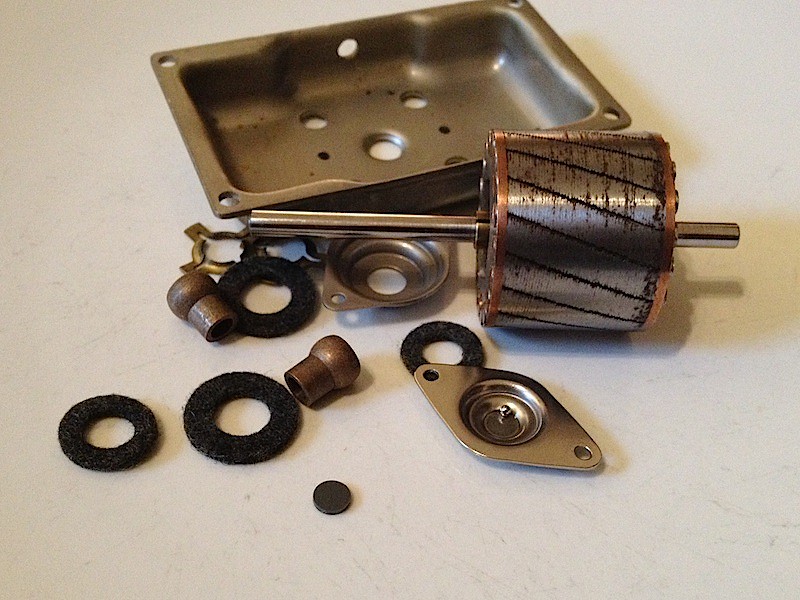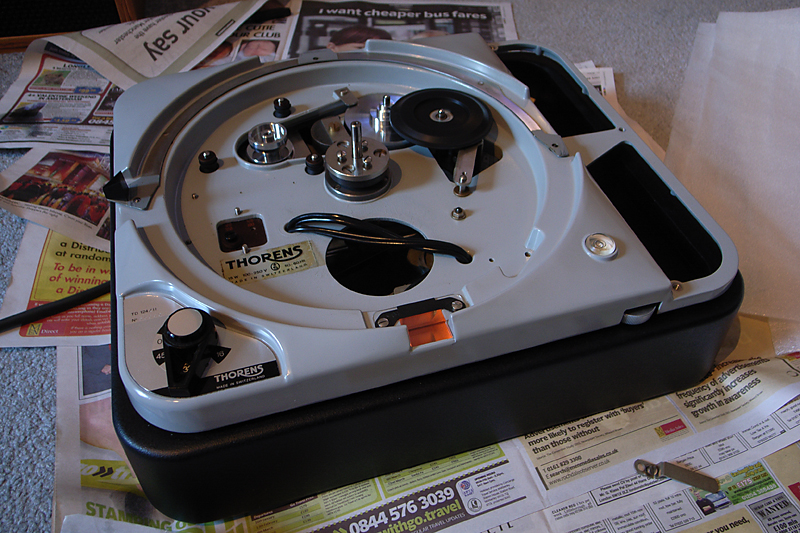For some reason Thorens created the stepped pulley with extraordinary bell-like qualities, it can certainly ring! There are many reasons why it may do so, but I'd not worry about it at this point. The first stage is to gently dismantle the deck to the point you can properly clean and fully assess it, e.g. there may be some dirt under the step-pulley, it may be bone dry etc etc.
Remove the belt and wash it in warm soapy water, let it soak for several hours. If it is intact and not so stretched that it slips when starting the deck I'd consider it usable. The vast majority if not all modern belts made for a TD-124 are too short or too thick in cross-section. They are just noisy and wrong. I'm pretty sure there were actually two belts, but can't prove this yet, i.e. one for the large 50Hz motor spindle, and one for the smaller 60Hz spindle. Everyone who makes them now tries to do a 'one size fits all' belt which is inevitably too tight for the 50Hz pulley. With the TD-124/II that tightness always equates to noise or belt-shed (the earlier MkI step pulley design is actually a lot quieter!). Just tight enough to start the deck is right IMHO. I wish I had the resources to commision a TD-124 belt as I'm convinced I could spec a better belt for 50Hz markets than is currently available. If your belt is in nice condition I'd actually be interested to know its measurements! Anyway, don't worry about belts at this stage, that is your future hobby...



